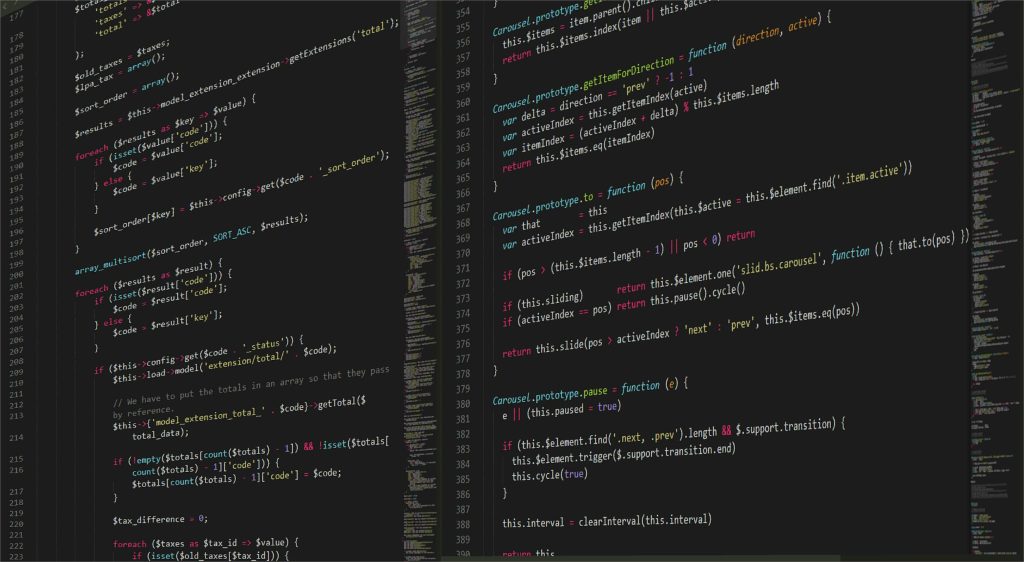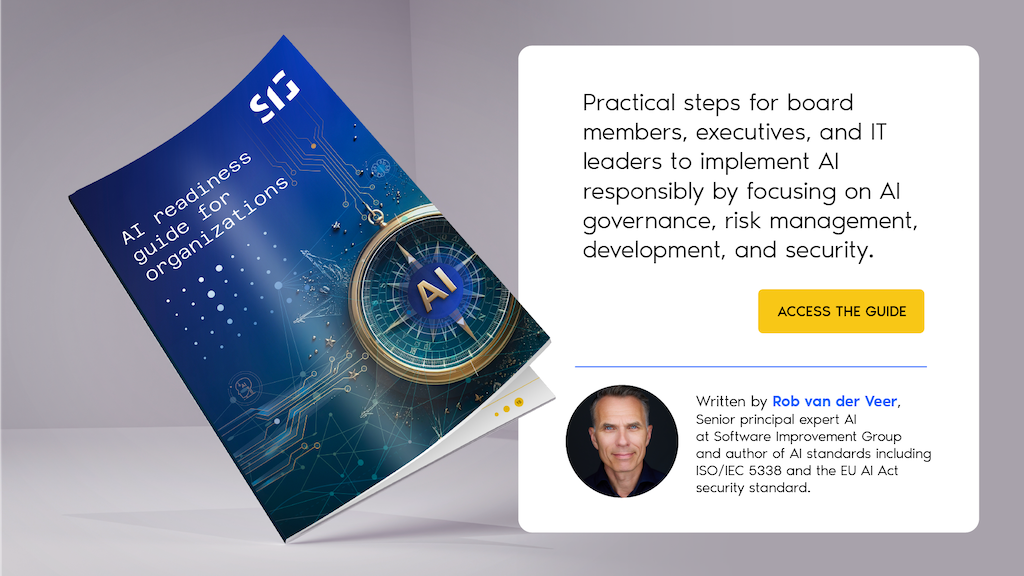Is AI software?
Summary
Artificial Intelligence (AI) is a new kind of software. According to ISO/IEC 5338, AI is software with unique capabilities and characteristics.
These include the ability to think autonomously, learn from data, make decisions based on that data, and even potentially talk, see, listen, and move. AI also needs regular retraining to stay accurate.
What sets AI software apart from traditional software is that it doesn’t just follow fixed rules. Instead, it learns by analyzing large sets of data, finding patterns, and using that knowledge to make educated guesses when making decisions, solving problems, or answering questions.
Because of its unique features, AI is often misunderstood and can carry risks, including security issues, mistrust, and potential harm. To manage these risks, AI needs strong engineering practices and proper regulation.
Introduction
Artificial Intelligence, or AI—once mostly seen in far-flung science fiction movies—is now a part of everyday conversation. It has become so common that it feels as though it has been present in our daily lives for decades. But in reality, AI in the public and business domain is fairly new—less than two years old!
ChatGPT, the world’s first publicly available large-language model (LLM) AI application, was launched in November 2020. Within just five days, it gained over 1 million users. Fast forward two years and there are 200 million active ChatGPT users—that’s more than 2% of the global population. OpenAI, the company behind ChatGPT, also reports that 92% of Fortune 500 companies are already using their generative LLM products.

It’s clear that AI is becoming an integral part of business, politics, and all aspects of society. But what exactly is AI? Is it software or hardware? And how does it differ from traditional computing?
In this article, we’ll answer these questions to help IT business leaders like yourself better understand the technology set to define the future of your organization.
What is AI?
Let’s start with the big question: Is AI software, hardware, or something else?
This is something that politicians and lawmakers around the world are trying to figure out as they work to create a clear, universal definition of AI for regulating the technology. And it’s not an easy question to answer, especially since ‘AI’ is really an umbrella term for a wide range of different systems.
Thankfully, a new ISO standard, co-developed by Software Improvement Group, has helped to provide a solid definition.
ISO/IEC 5338 defines AI as ‘software systems with unique characteristics.’ In simpler terms, when we ask what AI is, we can confidently say that it’s software—though it’s a type of software that’s different from what we’ve seen before.
To go a bit deeper, the OECD adds more detail, explaining that AI systems “infer from input data to generate outputs, such as predictions, content, recommendations, or decisions.”
In short, AI systems are special types of software that can learn, grow, and adapt on their own. They produce intelligent outputs in response to user-generated inputs, similar to how the human brain works.
Machine-learning AI—the most common type today—refers to software that’s ‘trained’ on large data sets. It learns to recognize patterns in the data and applies what it learns when analyzing user inputs and generating intelligent responses.

What’s the difference between AI and software?
So, we’ve established that AI is software—but with a caveat. It has unique characteristics that set it apart from traditional software. So, what are these differences?
Here’s the key:
Traditional software is designed to produce a set output based on a predetermined input. AI, on the other hand, produces its own unique output by applying what it has ‘learned’ through training to a variable, undefined input.
Let’s dive into these unique characteristics to show how AI is a whole new kind of software.
Exploring the unique characteristics of AI systems
Below is a list of the key characteristics of AI software that set it apart from the traditional software we’ve been used to working with since the early days of computing.
1. Inductive learning
In traditional software, learning happens deductively meaning it follows established rules and applies them the same way every time to reach the same outcome.
AI, however, uses a different process called inductive learning. This means AI learns by inferring rules from patterns found in data. It then applies these learned rules to future data to make predictions, decisions, or draw conclusions.
In simpler terms, inductive learning allows AI to make educated guesses. While this makes AI more flexible and intelligent, it also means it can make mistakes. Errors are part of the process.

2. Data-driven behavior
As described above, AI learns by analyzing data. This means its behavior is shaped by the data it receives, learns from, and processes. In this context, data becomes both an opportunity and a risk for this new type of autonomous, decision-making software.
AI has the potential to solve complex real-world problems, but the data it relies on can also include biases, be incomplete, or even manipulated—creating a risk if not carefully managed and regulated.
3. Talking, walking, hearing, and seeing robots
Some AI systems can communicate in natural language, just like humans, and may also have the ability to recognize sounds and images. For example, Google’s Image Search and Voice Search tools are both powered by AI.

AI also plays a key role in developing robots like the 1X domestic model and Boston Dynamics’ Atlas which are humanoid robots that use AI to move and interact with their surroundings in an intelligent way.
4. AI software models can ‘stale’ over time
Similar to the human brain, AI models need regular retraining to keep their data-driven functions from becoming outdated or inaccurate.
5. Autonomous decision-making and problem solving
Perhaps the clearest distinction between traditional software and AI is AI’s ability to make decisions and solve problems on its own. Trained to learn, grow, and adapt, AI systems can autonomously make decisions and tackle real-world problems.
This autonomy is a major advantage for technology and society, but it also comes with risks. The decisions AI makes and the problems it solves can have real-world impacts on people and the environment.
6. Issues of trust and transparency
AI is still a new technology, and its autonomy makes it harder to trust. ML and LLMs rely on complex network structures called ‘neural networks.’ And like the neural networks of the brain, these networks become so intelligent and complicated that they can be difficult to fully understand.
This complexity raises significant concerns regarding trust and transparency, highlighting the need for effective regulations to ensure AI is developed and used safely.
7. Issues of security
The unique nature of AI also raises new security concerns. AI introduces new technical aspects—like the data/model supply chain, training data, model parameters, and AI documentation—that need to be understood and regulated.
Until these aspects are better controlled, they could lead to security risks that traditional software doesn’t have.
AI is software with unique characteristics and needs
AI is indeed software, but it’s a new type of software with a unique set of characteristics that we haven’t seen before.
Unlike traditional software, AI systems learn, grow, adapt and operate autonomously from their developers. They need regular retraining and inductive teaching to produce outputs that can affect real-world outcomes, from solving problems to making critical decisions.
AI is driven by data and can even be designed to speak, hear, see, and move—thanks to its integration with robotic hardware.
While AI’s unique characteristics offer incredible opportunities and benefits for businesses, society, culture, and the economy, they also pose risks to safety, security, and trust.
To make AI software safe and trustworthy, we need solid engineering practices, continuous validation, regular retraining, strict security protocols, and clear documentation. To prepare your organization for AI integration, download our free guide AI readiness guide today.




